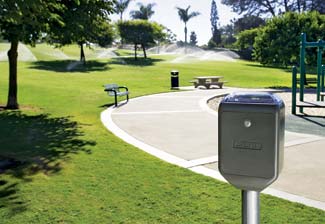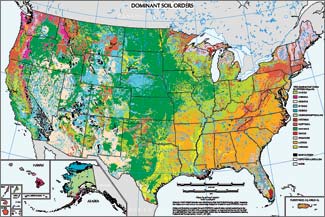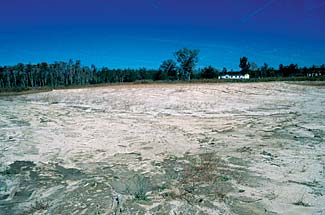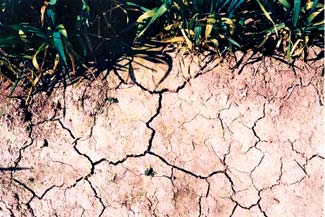Programming Controllers for Maximum Water Savings
By Stuart Spaulding, CLIA
No, it’s not a parking meter.
DIG’s LEIT Control System can be programmed to operate up to 28 valves, spanning an area of over one mile with up to 12 independent water schedules per valve. Like other new controllers, the unit is available with a handheld remote programmer to speed adjustments over large areas like parks and golf courses.
It’s that time of year again, spring has sprung, and in many parts of the country, irrigation controllers are being turned on after months of winter dormancy. In the Southwestern US however, there has been so little rain that many irrigators have been forced to let their clocks run all winter long. In either case, now is a good time to check and adjust the program(s) in your controllers, and for some, this may also be the right time to review the basics of programming irrigation controllers for maximum water efficiency.
Even the most efficient, properly designed, installed and maintained irrigation system will waste water if the controller is not programmed correctly. It is estimated that most irrigation controllers are set to overwater the landscape by about 30 percent on an annual basis; this is primarily due to the fact that they are programmed to irrigate too often, and/or the programs are not trimmed back (or turned off) during the cooler months of the year.
In order to know how much water to apply, and how often, it helps to know a little about soil type and texture. The goal here is to determine how much water the soil can absorb before water is wasted due to deep percolation and/or run-off. Soil types and textures vary greatly around the country, from sandy to loamy to heavier tighter clay soils. (See map opposite.)
For plants and turf in sandy soil, program the controller to release water over several short periods. Plants in clay soil types should be watered over several longer periods. You need to give the water time to soak into the earth. A soil consultant can tell you what kind of soil you’re dealing with.
These various soil types differ in their ability to hold water that is available for the plant material to intake. Sandy soils have a much lower amount of available water than do clay soils, and these looser lighter soils need to be irrigated more frequently than clay soils. The heavier, denser clay soils should be watered for longer durations, but less often. If you are unsure of the soil type in question, it is a good idea to take a soil core sample with a soil probe; this will give you a good idea of average root depth as well. A few hours after an irrigation cycle has finished, take a sample at least 12 inches below grade, and see exactly how far down the water is penetrating. To encourage deeper rooting, let the top 50 percent of the root zone dry out completely before watering again.
Another helpful number to know is the approximate precipitation rate of the sprinklers. This is the rate (measured in inches per hour) at which the heads deliver water to the landscape. Keep in mind that the precipitation rate depends on the spacing and the flow rate of the sprinkler heads. Generally speaking, fixed sprays have a precipitation rate between 1 to 3 inches per hour, gear driven rotors between .1 and 1.5 inches per hour, and impacts between .1 to 2 inches per hour. Check the manufacturer’s catalog or web site to determine the approximate precipitation rate for different heads. Knowing this number will allow you to determine base watering duration, and avoid wasting water by under or over irrigating. Remember that you may have to break down the run times into shorter cycles to achieve deep watering in heavier, compacted soils.
Be sure to take advantage of all the water saving programming features of the controllers under your care. Most controllers have multiple programs available.
Sandy soil like this has poor water retention and needs frequent but relatively light watering to avoid drying out. Water rapidly penetrates to one-foot depth in sandy soil. Water runs past root depth in sand, making long watering periods wasteful.
Group the zones with similar water requirements into separate programs. For example, turf systems might be in program “A”, shrub systems on program “B”, slopes on program “C”, and drip zones on program “D”. Schedule program start times in early AM, and when there are many stations on one program, use “valve grouping” (if available) to run two or more zones simultaneously if there are no hydraulic limitations on the system and ensure all systems operate before or shortly after sunrise.
Since all plant’s water requirements vary throughout the year, utilize cyclical frequencies to simplify seasonal adjustments, rather than changing each individual stations watering duration. For example, Program “A” is controlling 8 turf zones. In June and July, it might be set to water once every 3 days. In August as the temps drop, an irrigation manager can quickly push a button or two and extend the frequency to once every 4 or 5 days, with out altering any durations. As the seasons change, increasing or decreasing the cyclical frequencies is an easy way to save a lot of water with a non-ET based controller.
Dense clay soils like this need to be watered for longer durations than sandy soil—but less often. Overwatering clay can result in pooling and plant death from standing water. It can take six hours for water to penetrate one foot in heavy clay.
Consider also trimming back on or increasing your base schedule by using the controllers budgeting option (if available). This feature when engaged automatically alters the duration of each station by a determined percentage.
With most AC controllers, these budgeting changes remain in effect until changed by the programmer, however some controllers (DIG Corp’s LEIT controller for example) can be pre-set to alter durations automatically on a monthly basis.
In most climate zones, a rain sensor is a must (they are required in many areas) and for good reason, they work! If one is present on a site, it should be checked out visually and cleaned if necessary. Trip it manually and verify that it is not turned off and has a viable electric connection with the controller. If there is not a rain shut off device on the site, why not suggest the installation to the client as a water saving up-grade? The time-tested Mini-Clik (Hunter Industries) is reliable, adjustable, and is available in an easy to install conduit version.
By implementing these programming practices, and making periodic informed adjustments to your controllers, you will save more than just water and money.
Stuart Spaulding, CLIA, is technical service manager for DIG Corp., a Vista, Calif. provider of alternative power controllers and drip irrigation systems. Spaulding also has more than 15 years of field experience in commercial landscape construction. He is available to answer installation questions regarding DIG products at questions@digcorp.com.





